If you’re out looking for your first four wheeler, you will no doubt run across the term CC. But what does that even mean? Maybe you know it has something to do with the size of the engine, but you’re wondering how that affects you. Well, in this article I will go over exactly what CC means and which size engine you should be looking for yourself.
A ‘CC’ is a cubic centimeter and is known as the size of the ATVs engine. You may also see CC stand for cm³ or milliliter. It is basically just a measurement of volume that can fit inside the engine. If you have bigger cylinders and bigger pistons, you will have more power and also a higher CC. To use a car as an example, a 2 liter engine is 2000 cm³, 2000 milliliters, or 2000 CC.
To think of it another way, it is the amount of gas and air mixture that can fit in the engine to move the pistons. The more mixture that can fit, the more power your engine will have. Something to keep in mind though. If you have more air and gas mixture going into the engine (you have a higher CC), you will be using more gas.
You can also view the CCs of engine as the engines displacement. If the volume in your cylinder increases, your engine has more combustion. Your piston travels from bottom center to top center, with your spark plugs igniting the fuel and air mixture to push the piston back down. Which eventually turns your wheels. With more room for air fuel mixture, the piston will have more of a push back down, which sends more power to your wheels.
You will sometimes notice the size of the engine in CCs stamped onto the engine somewhere. They typically stamp in a more accurate measurement than what the engine is considered to be. But if you see something like 348cc stamped into the engine, it is considered a 350cc engine.
To calculate the displacement or CCs of an engine they use a simple formula. Well, ok it’s not that simple, but it’s the same formula used every time. First they take the diameter of the cylinder, known as the bore. Along with the distance the piston has to travel, known as the stoke, and the number of cylinders. That’s all you need to find the volume of the engine.
First they take the diameter of the cylinder, known as the bore. Along with the distance the piston has to travel, known as the stoke, and the number of cylinders. That’s all you need to find the volume of the engine.
Next they put those numbers into this formula: Displacement (CCs) = (π(bore/2)²)(stroke)(cylinders)
There are usually only 1 or 2 cylinders but the rest of the measurements are done in centimeters. Here is a video I found to help explain things if you’re still confused.
If you’re looking for an ATV and want to know which size you should get, there are some factors to consider first. Like your age, weight, experience, and so on. Also consider what you are willing to grow into. Here is a chart I made to get you started based off height. This is just a guide for you to use, you still need to consider what you’ll be comfortable with riding, and what you’ll be using the ATV for.
Here is a chart I made to get you started based off height. This is just a guide for you to use, you still need to consider what you’ll be comfortable with riding, and what you’ll be using the ATV for.
These types of four wheelers are for kids at an entry level. A lot of what you’ll find in this size are between 50cc and 150cc. There’s not much to worry about as far as power out of these kinds of machines because most of them can be regulated with a governor. It’s just a way of limiting the power of the quad, and you can increase the allowed power as your kid grows. To learn more about kids ATVs and what to look for, check out this article.
These types of ATV are made for doing work around the yard. They’re great for hauling, carrying, and towing yard equipment. A lot of people use them for hunting also. There are plenty of attachments you can find for ATVs like this, for example a snow plow can be attached to the front of these.
Because these ATVs are used for working they need more power than a quad type or sport type four wheeler. You can usually find these anywhere from 450cc up to 1100cc. For most applications though, I find that 550cc or 600cc to be plenty of power to get things done around the farm.
You can usually find these anywhere from 450cc up to 1100cc. For most applications though, I find that 550cc or 600cc to be plenty of power to get things done around the farm.
These types of ATVs are the fun toys. A lot of the time you’ll see these types of quads prepared for racing or doing stunts and tricks. You can usually tell this type just by looks, they look more aerodynamic and sporty looking.
These quads look cool and are great for riding around some trails or taking them to a dirt track for some fun. Because these appeal to such a large audience they can be found anywhere from 70cc up to 1100cc. I’ve been able to have plenty of fun on an average 400cc sport quad though. That will give you plenty of power to do the things you’d want it to. I’m not gonna lie, the 700cc Raptor i rode was a beast, but you can still have fun with something like a 250cc Blaster.
These are more of the dune buggy looking off road vehicles. Some seat two people and some seat four or more people. You’ll find these in sport and utility versions for whatever you need them for. But because of the extra passengers and extra weight of the frame, these engines are usually around 700cc up to 1100cc.
Some seat two people and some seat four or more people. You’ll find these in sport and utility versions for whatever you need them for. But because of the extra passengers and extra weight of the frame, these engines are usually around 700cc up to 1100cc.
I hope this has helped you to decide which size engine you should be looking for to fit your needs. If this is your first time buying an ATV, I would suggest buying used if you can. That way the price will be a lot less, and if you decide to sell, you won’t be out all that much money.
Getting a used ATV will also help you discover what you like and don’t like. If you buy brand new, and want to sell in a couple months, you could be out over 1000 dollars. If you buy used on the other hand, you could sell a couple months later maybe even for what you paid for it, depending on what kind of deal you got.
Sharing is caring!
If you’re in the market for a new ATV, one factor you’ll need to consider in your search is engine power, which has a correlation with engine size. The number of CCs (cubic centimeters) is the measurement of the ATV’s engine volume. The general rule is that larger vehicles need more CCs, and more CCs means more power. Every ATV engine should have its CCs printed or stamped on it somewhere.
The number of CCs (cubic centimeters) is the measurement of the ATV’s engine volume. The general rule is that larger vehicles need more CCs, and more CCs means more power. Every ATV engine should have its CCs printed or stamped on it somewhere.
But power isn’t the only consideration, or even the most important one, especially if you’re new to ATVs. You should consider a variety of factors, including the kind of ATV you’re most comfortable riding, and the tasks you’ll be performing with the ATV.
One of the most common questions people have when searching for an ATV is how much power they need their engine to have. While it can be tempting to maximize your engine power, this really will not be necessary for most users.
Here’s a quick look at some of the most common types of ATVs and their typical engine requirements.
 You can find a wide range of attachments to add to your utility ATVs, such as plows or rakes. You’ll find utility ATVs with engines ranging from 450 cc to 1100 cc, but for most people, somewhere around 550 or 600 cc will be more than sufficient to accomplish the vast majority of jobs they have around their property.
You can find a wide range of attachments to add to your utility ATVs, such as plows or rakes. You’ll find utility ATVs with engines ranging from 450 cc to 1100 cc, but for most people, somewhere around 550 or 600 cc will be more than sufficient to accomplish the vast majority of jobs they have around their property.
You are the best judge for what your needs are as far as engine size and power, but the majority of buyers do not require a massively powerful engine. You’ll save money on both fuel and the vehicle itself by going with an engine that’s suitable for your needs.
You’ll save money on both fuel and the vehicle itself by going with an engine that’s suitable for your needs.
When researching ATVs, don’t forget to look into ATV ramps as well! These ramps make it easy to load or unload your ATV on to a truck bed or trailer.
Black Widow Pro has a large selection of ATV ramps, all of which are designed to be lightweight yet extremely durable, offering high traction for extra safety during loading and unloading. Any ramp you purchase should have a load capacity that makes it capable of supporting the loaded wet weight of your ATV. Non-folding ATV ramps are usually shorter and designed for loading ATVs into trailers. If you need a longer ramp to get your four-wheeler into the bed of a truck, folding ramps in full-width or dual runner designs provide the length yet store compactly when they’re not needed.
> MOTOR EQUIPMENT> Decoding the designations of ATV engines and increasing power
This article will focus on decoding the markings of Chinese engines.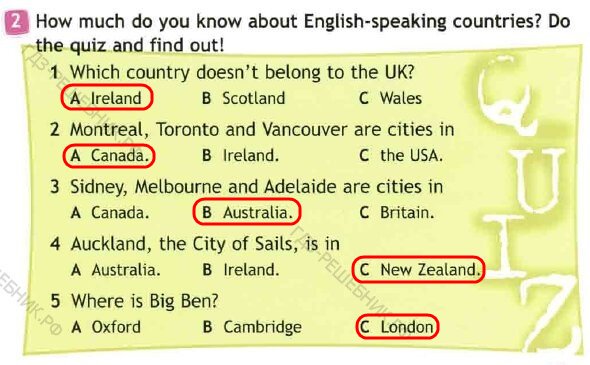
Since there are a lot of engines made in China in our country, I think it is useful to know and understand the abbreviation of numbers and letters that mark these engines:
The first digit of the code corresponds to the number of cylinders. Letter P means a horizontal arrangement, with a V-shaped arrangement of two cylinders, the letter V is put, with a vertical arrangement of the cylinder (or if there are two of them in parallel), the letter is not put.
The second and third digits of are the rounded (upwards) cylinder diameter in millimeters.
The first letter after the numbers indicates the type of cooling system: F - air, by ram air; Q - forced air when the letter before the letter 9 is missing0005 M - means liquid cooling. The very same letter M, always present in the designation, refers to the engines of the motorcycle type.
The third letter of is the code for the working volume in cm / cu: A - <50 ; B - 50 ; C - 60 ; D - 70 ; E - 80 ; F - 90 ; G - 100 ; H - 110 ; I - 125 ; J - 150 ; K - 175 ; L - 200 ; M - 250 ; N - 300 ; R - 350 ; Q - 400 ; R - 500 ; S - 600 ; T - 650 ; U - 700 ; V - 750 ; W - 800 ; X - 900 ; Y - 1000 ; Z - 1200 .
Example:
139QMB: 1-cylinder scooter air vent with bore 39 mm and displacement 50 cc . If we make a simple calculation using the cylinder volume formula V=SpD2/4, we calculate the piston stroke S=41 mm.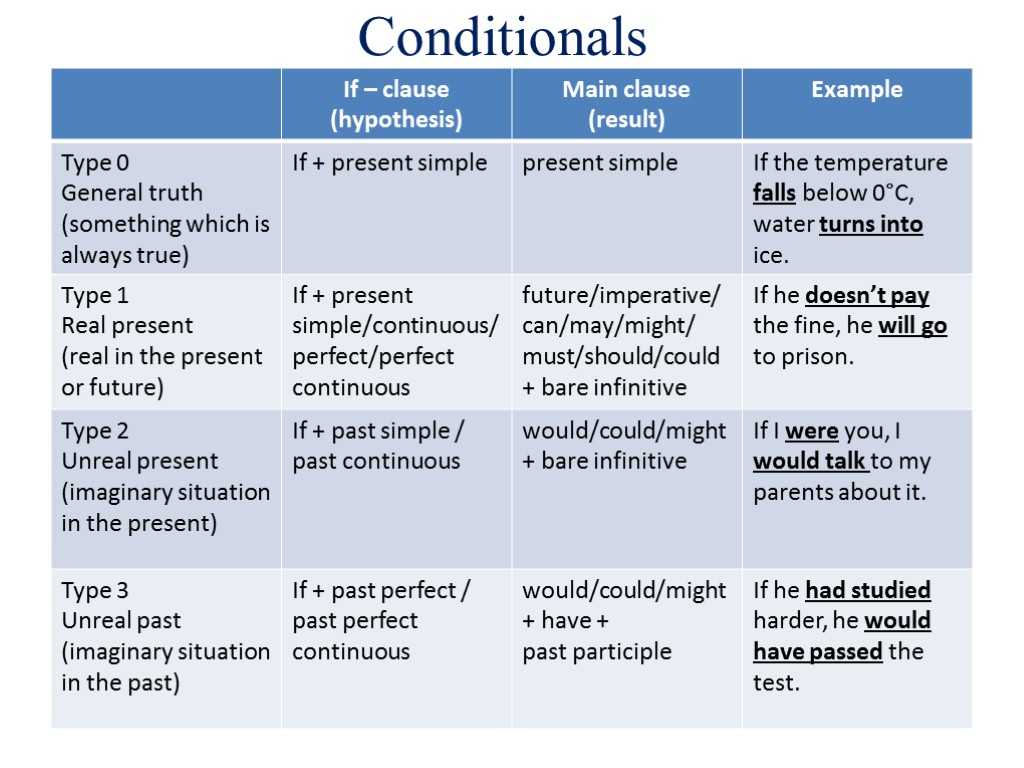 This dimension (with some rounding) has only the engine of the Honda GY6 / 9 family0003
This dimension (with some rounding) has only the engine of the Honda GY6 / 9 family0003
1P39FMB: seems to be the same, but this air-cooled motor is, of course, a 50cc Honda Super Cub clone.
152FMI is also an air-cooled single barrel, 125 cm/cu.m.
255MM - 2-cylinder 250cc liquid-cooled engine, apparently CM250, 2V49FMM - Air-cooled V-twin, clone of Yamaha's "Witch" XV250S Virago.
Since some unscrupulous sellers often decently overestimate the technical characteristics of the motorcycles they sell, in order to gain an advantage in sales over their competitors, we will analyze
Is it possible to increase engine power?
Surely, many of the fans of ATVs sometimes thought about how to make their steel monster faster. Of course, it will not be possible to make a Formula 1 car out of an ATV, but in principle it is possible to slightly increase the speed. So for example, when boring a cylinder, you can increase engine power by about 5%. . Not enough? you can do more, BUT, be prepared to incur significant costs in the modernization process. Since in order to increase engine power, it will be necessary to change not only the cylinder head, or the carburetor, which often simply will not fit this engine “physically”. It will also be necessary to change a number of expensive engine parts, including the shaft and gears. in a nutshell, it is easier to put another, more powerful engine, provided that it is not very different in size from the one being replaced, it will fit into the frame of your ATV and you can fix it there in some way. Since the more power, the larger the size of the engine itself. Example: boat motor. have you seen a 2hp outboard motor? And 5l/s? and 8? now put them side by side and compare the size. The more power, the larger the size of the product itself.
. Not enough? you can do more, BUT, be prepared to incur significant costs in the modernization process. Since in order to increase engine power, it will be necessary to change not only the cylinder head, or the carburetor, which often simply will not fit this engine “physically”. It will also be necessary to change a number of expensive engine parts, including the shaft and gears. in a nutshell, it is easier to put another, more powerful engine, provided that it is not very different in size from the one being replaced, it will fit into the frame of your ATV and you can fix it there in some way. Since the more power, the larger the size of the engine itself. Example: boat motor. have you seen a 2hp outboard motor? And 5l/s? and 8? now put them side by side and compare the size. The more power, the larger the size of the product itself.
Of course, from a 250cc engine, you will never get 350cc, or even 300cc. However, it is possible to increase the power of your engine within reasonable limits.
To do this, we suggest using the following methods to increase the speed and "throttling" of the ATV:
1. Install a new air filter that will supply better air, which will increase the acceleration of your ATV. Such air filters are produced by various manufacturers specializing in spare parts for tuning ATVs. The filter can be bought at an auto or motorcycle shop, or ordered directly from the manufacturer.
2. Install a new exhaust system, ideally a "co-current" exhaust system that will increase the power and speed of your ATV. These systems are also produced by specialized firms.
3. Change the gear ratio by putting a smaller sprocket on your ATV (assuming your ATV has a chain drive). The larger the sprocket and the smaller the sprocket, the greater the speed indicator, in return you sacrifice power. A suitable size sprocket can be purchased at the nearest motorcycle dealer
4. To increase speed, there are CVT kits, jet carburetor kits or sports injection systems.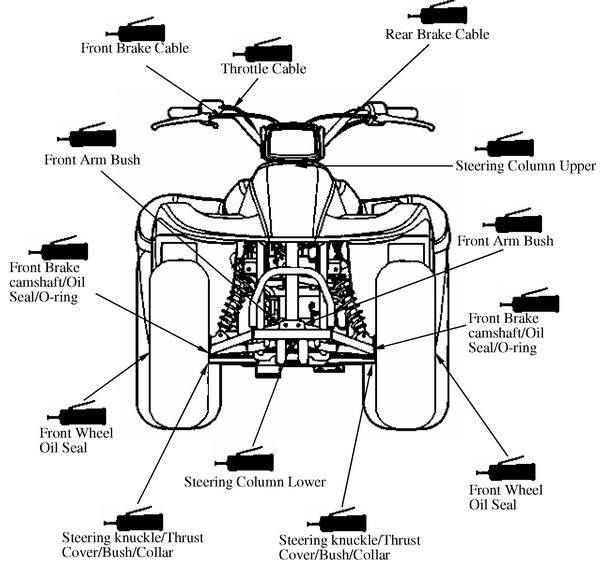 There are also electronic engine control units. They provide enough power and speed.
There are also electronic engine control units. They provide enough power and speed.
5. Increase engine power with the special bore kit. This set includes new valves, camshaft, cylinder head, piston, connecting rod, cylinder. This set will increase the power of your engine and the speed of your ATV. This is the most effective, in our opinion, way to increase the speed of an ATV, although it is more expensive.
With the development of the quadrosphere all over the world, more and more fishermen, hunters, travelers, extreme sportsmen and just lovers of outdoor activities, make their choice in favor of purchasing motor vehicles.
You have seen this technique with friends, look at You-Tub, how popular quad bloggers spend their leisure time, maybe even you were given a ride on an ATV and you decided to buy it no matter what. But, as expected, YOU are faced with the choice of which ATV to buy?
But, as expected, YOU are faced with the choice of which ATV to buy?
TvoyGarage.RU experts often face such questions from future owners. Based on these appeals, we decided to write a manual for those who decide to purchase an ATV.
This article will not tell you “buy this particular ATV”, it is aimed at ensuring that you understand what types of ATVs exist, why they are needed and for what conditions they are intended.
Where does the history of quadro-creation begin?
The progenitor of the ATV in all its understandings was a three-wheeled trike. In 1967, Honda R&D LTD received an order from an American company. The order was as follows: “American dealers sell motorcycles in summer, snowmobiles in winter, but what to sell in the off-season”? Honda accepted what they thought was a logical order. The company found a suitable engineer, Osama Takeuchi, he was given several promising engineers to help him and was instructed to lead the project. In fact, Osama became the Father of the first ATV.
In fact, Osama became the Father of the first ATV.
The result of fruitful work was the world's first ATV Honda US90. At that time, due to the fact that it was a trike and more like a motorcycle, the name contained the abbreviation -ATC, or All Terrain Cycle (Off-road motorcycle).
A new base was developed for the US90, in which they placed a time-tested motorcycle 4-stroke, single-cylinder, 90 cc engine with 7 hp, equipped it with a 4-speed 2-mode gearbox with automatic clutch. At the back, a pendulum lever was used with an axle fixed to it, designed for 2 wheels. Early on US90 installed volumetric rubber with a tractor tread, but as practice has shown for such a small and light vehicle, rubber does not work very well. Especially on loose and loose surfaces: snow, sand, mud. Motorcycle tires didn't fit either. And only when Osama Takeyuchi received a 6-wheeled amphibian Amphi-Cat from the USA did things get off the ground. The US90 was fitted with 20" low pressure wheels with high flotation and buoyancy. But they did not stop there, it was decided to develop their own tires. The result was 22-inch wheels, inflated to 2.2 psi, they were ideally suited to this model.
But they did not stop there, it was decided to develop their own tires. The result was 22-inch wheels, inflated to 2.2 psi, they were ideally suited to this model.
During the tests, having wound many kilometers on impassable roads, sands and hills with a surface slope of up to 35 degrees, quite a few improvements were made to the chassis. In order for the new car to be good not only for off-road rides, but also for work in the field, quite a lot of improvements had to be made in the forest. All improvements Osama Takeyuchi patented.
One of the important improvements was the change of the classic motorcycle throttle to the accustomed throttle for all of us. The fact is that the motorcycle throttle was difficult to control when making maneuvers. Installing a gas trigger instead of it, under the thumb, allowed the driver to move his own weight when maneuvering, while not losing control over the trigger.
The suspension, at that moment, was also abandoned. The fact is that low-pressure tires themselves dampen bumps very well. Moreover, they are good for agriculture, because they do not "plow" the soil, do not spoil plantings or lawns.
The fact is that low-pressure tires themselves dampen bumps very well. Moreover, they are good for agriculture, because they do not "plow" the soil, do not spoil plantings or lawns.
The premiere of the new, for the global industry, Honda US90 vehicle took place in 1969. in the USA. In 1971 it was renamed the Honda ATC90.
In the same year, a new, 7th in a row, Bond series - 007 "Diamonds Are Forever" (007: Diamonds Are Forever) was released. In this film, the new ATC9 just demonstrated their capabilities0. This scene from the movie served as a great promotional video for a new vehicle. ATC90 instantly became a popular entertainment on the beaches of California, until the end of the 70s, no one even thought of using this novelty for utilitarian purposes, for which this tool was developed.
It so happened that the American vision and Hollywood showed a slightly different path for the development of this technique and in the first decades no one thought about the utilitarian use of ATC90. But the same American users, in the end, by their own example and experience, showed the range of use of such equipment, which ultimately gave rise to its development in different directions.
But the same American users, in the end, by their own example and experience, showed the range of use of such equipment, which ultimately gave rise to its development in different directions.
For eight years, Honda R&D LTD has been a monopoly in this market, but as it happens, competition cannot be stopped. In 1979 Yamaha introduces its first all-terrain vehicle, the YT125. In the USA, the novelty appeared in 1980 and was called the Yamaha Tri-Moto. The all-terrain vehicle was equipped with a 2-stroke, 123 cc engine and was equipped with a 5-speed gearbox.
The ancestor of Honda all-terrain vehicles did not stand still, and already in 1981. released the first sports model Honda ATC250. In this unit, developments from motocross were used. They used a powerful 2-stroke 248 cc engine, installed adjustable suspension front and rear, front disc brakes, manual clutch.
The appearance of the suspension made it possible to switch to “normal” wheels, equipped with a tread with pronounced lugs.
In 1981 and Kawasaki launches its first all-terrain vehicle, the KLT200. Unlike competitors from Honda and Yamaha, the Kawasaki introduced an electric engine starter, a manual clutch, and a dual-mode (locking) differential.
In 1982 Honda introduces the first utility model, the Honda ATC 200E Big Red.
The package included a telescopic suspension, a front and rear trunk, a 192 cc engine with an electric starter, a 5-speed semi-automatic transmission and a number of additional equipment for various purposes. This model was popular in the USA with farmers and hunters.
In 1982 Suzuki has applied for a patent for a 4-wheel ATV, which, in fact, became the FIRST ATV!
The patent was accepted and Suzuki launches the first, in our understanding, normal 4-wheel ATV, the Suzuki ATV-QuadRunner LT125. This model was positioned as a "entertainment vehicle for beginners", that is, it was designed to educate inexperienced owners, for this a more stable four-wheel layout was used.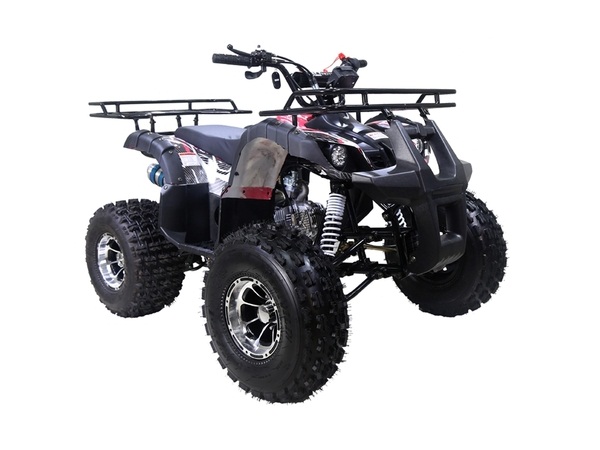 In the future, these riders had to transfer to more powerful 3-wheeled ATVs. In the world community, at first, not everyone liked the idea with 4 wheels - this meant a heavier structure, complication, as a fact of a rise in price, but soon significant advantages were revealed, for example, such as improved balance of the vehicle.
In the future, these riders had to transfer to more powerful 3-wheeled ATVs. In the world community, at first, not everyone liked the idea with 4 wheels - this meant a heavier structure, complication, as a fact of a rise in price, but soon significant advantages were revealed, for example, such as improved balance of the vehicle.
In 1983 Honda releases its most successful 3-wheel sport model, the Honda ATC200X. It had a 4-stroke engine, front and rear suspension and lightweight aluminum wheels with motocross tires.
In 1984 Suzuki releases the small, 4-wheel Suzuki LT50, which is becoming very popular with novice ATV riders. In the same year, Yamaha released its first 4-wheeler, the YFM200 Moto-4. It is equipped with 196cc, 4 stroke engine.
In the same year, Honda presents its first 4-wheeler, and not as competitors, starting with children, but as a full-fledged adult ATV for utilitarian purposes. Honda TRX200- is equipped with a single-cylinder, 4-stroke engine, 5-speed gearbox with reverse, cardan transmission, front and rear luggage racks.
In 1985 Kawasaki releases the Bayou 185(KLF158-A).
Thus, all Japanese companies on the market have switched to 4-wheel ATVs.
American manufacturers, having failed to compete with Japanese manufacturers in a 3-wheel version, decided to launch their product on the market. And so, in March 1985. American company Polaris Industries enters the ATV market.
The company entered the market with a bang. As a successful snowmobile manufacturer, Polaris Industries is introducing the Polaris Trail Boss. In which the best of what was possible at that time was assembled: Automatic Polaris Variable transmission (PVT), rear and front suspension with large strokes, MacPherson type front suspension, disc brakes on all four wheels, large (solid) steps.
In addition to the aforementioned 4-wheeler, Polaris decided to play it safe and released the 3-wheeled Polaris Scrambler. In a couple of years, 1,700 of these ATVs were produced, and after 1986.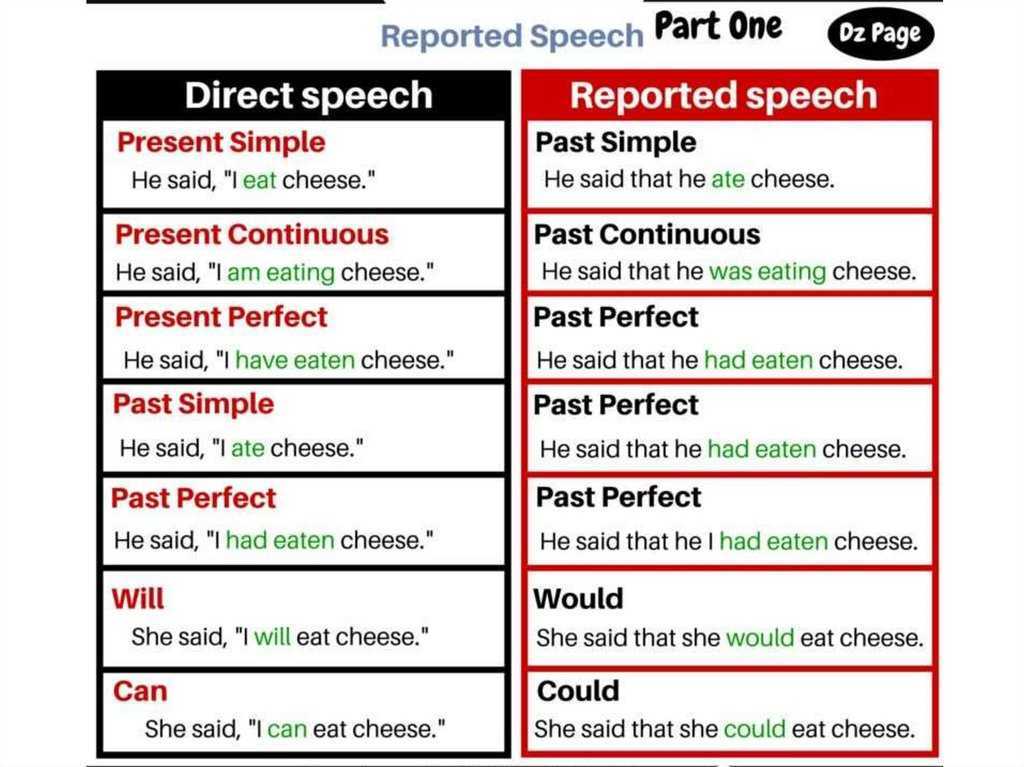 Polaris Scrambler began to be produced on a 4-wheel base.
Polaris Scrambler began to be produced on a 4-wheel base.
The arrival of Polaris Industries on the market significantly revived competitors, new models began to be released at an increasing speed. So, all in the same 1985. Yamaha releases the progenitor, but still on 3 wheels, of the now famous Raptor model. The model, called the Yamaha Tri-Z YTZ250, was equipped with hydraulic disc brakes, gas front shock absorbers, rear swingarm suspension with a single gas shock absorber, fuel tank under the seat for a lower center of gravity, and a powerful 250cc, 2-stroke, liquid-cooled engine.
After the release of this model, the time will come for other big names Warrior and Banshee.
In 1985 sales growth led to an increase in accidents on ATVs, which was the reason for the investigation of this issue by the Consumer Product Safety Commission (CPSC). In most cases, emergencies were created by the owners of the ATVs themselves. As practice showed, it was drunken youth driving along the beaches of California. For some reason, the public was outraged not at the drivers, but at the manufacturers of equipment. At 1986 CPSC statistics showed that all accidents are the result of improper operation.
As practice showed, it was drunken youth driving along the beaches of California. For some reason, the public was outraged not at the drivers, but at the manufacturers of equipment. At 1986 CPSC statistics showed that all accidents are the result of improper operation.
Honda was the first manufacturer to react to this situation by launching special operating manuals and warnings. They were placed as labels on ATVs to instruct the owner on the safe operation of his ATC or ATV. New CPSC statistics in 1988 showed that with the use of the manual, the accident rate was reduced by 33%. But nevertheless April 28, 19In 1988, American ATV distributors entered into a 10-year agreement with the CPSC called the Final Consent Decreet. Following this agreement, the ATV industry committed to invest about $100 million to expand safe driving programs. In the same agreement, it was said that the companies undertake to discontinue production of 3-wheeled all-terrain vehicles, withdraw from their distribution networks and buy out all their unsold products from intermediaries.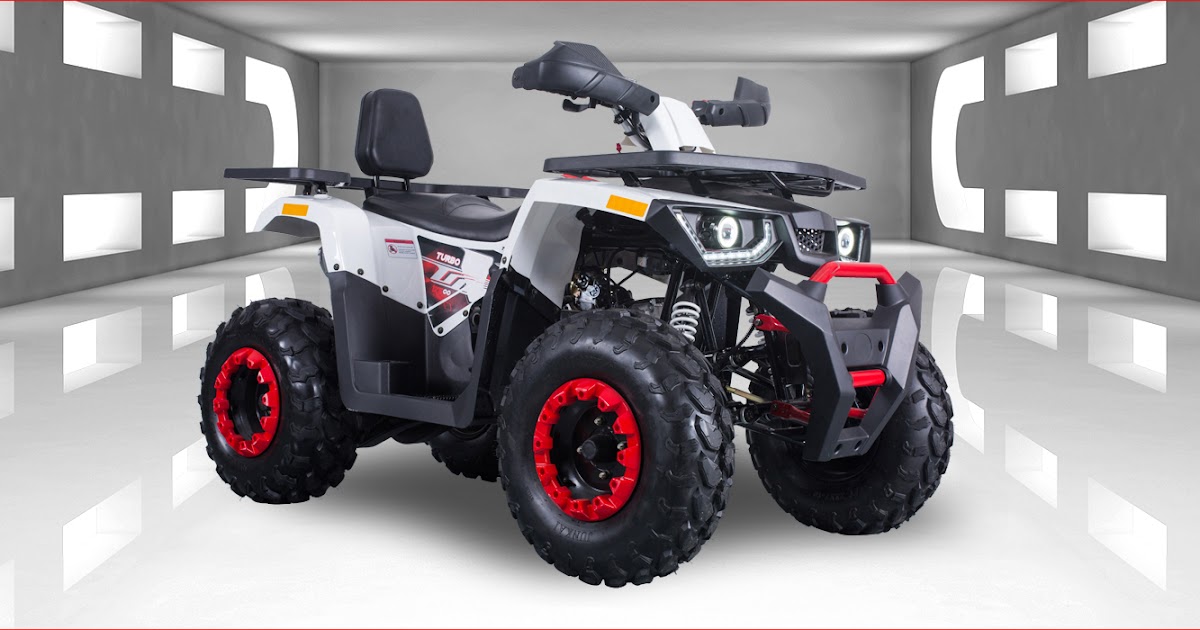
It was a significant blow to Honda, but at that time a 4-wheel model was already in development and at 19'86 Honda releases the first ATV Four Trax350 4x4 all-wheel drive ATV. This model will become the most successful in the history of the company.
4-wheel ATVs began to win back the market from 3-wheelers, completely forcing them out of the market. Thus ended the era of 3-wheelers.
In 1989 Kawasaki introduces its first all-wheel drive model, the Bayou300 4x4 with a 290 cc engine, 5-speed manual transmission with reduction gear, reverse and drivelines to the rear and front axles.
In 1991 Suzuki releases its legendary Suzuki King-Quad ATV. It is equipped with a single-cylinder, 4-stroke engine with a volume of 280 cubic centimeters, independent multi-link suspension, as well as a 5-speed manual transmission with a choice of 3 low gear options: High, Low, Super Low and that's not all! The ATV was not deprived of four-wheel drive modes: full, full with a locked differential.
In 1995, Polaris introduces the Sportsman 500 4x4 ATV. This ATV was equipped with a proprietary automatic transmission, a ground clearance of 280 mm, and an independent rear suspension. The ATV turned out to be quite popular. Several specialized publications recognized it as the best ATV of the year. And then another North American manufacturer could not stand it.
ArctCo, a well-known snowmobile manufacturer, in August 1996, under pressure from more than 1,200 of its own dealers, changed its name to the more resounding and popular Arctic Cat Inc. and proceeds to the production of its own ATVs. Arctic Cat BearCat 454 4x4 (introduced at the end of 1995) and the 300 series were the first models.
By 1997, there were already six major manufacturers on the ATV market: Honda, Yamaha, Suzuki, Kawasaki, Polaris, Arctic Cat. And everyone was waiting for the emergence of a new major player, one of the most influential companies in the snowmobile market - the Canadian Bombardier Recreation Product Inc. And that happened in 1998.
And that happened in 1998.
Bombardier Recreation Product Inc. introduced the Traxter all-terrain vehicle to the market. The quad turned out to be very successful. At 1999g. this model won the ATV of the Year award from the respected ATV Magazine. Not wanting to stop there, in 2000 Bombardier released the sports model DS650.
In March 2002, Bombardier, together with Rotax, launches an advanced 2-stroke engine with SDI (Semi direct injection) technology. The Rotax 800 2-TEC SDI was originally developed for snowmobiles, but SDI technology has since migrated to ATVs. In the same year, on July 6, a more significant event took place, Bombardier opens a new milestone in the history of ATVs. The TRAXTER MAX ATV is introduced to the market, the world's first ATV for two with a tandem seating.
In November 2002, Bombardier presents another novelty, and several versions of the ATV with different motors were presented. Outlander 330 H.O. all-wheel drive 4x4 and monodrive 2x4. Outlander 400 H.O. XT 2x4.
Outlander 330 H.O. all-wheel drive 4x4 and monodrive 2x4. Outlander 400 H.O. XT 2x4.
In 2004, the company underwent a rebranding. A new logo appeared, and the name Bombardier Recreation Product Inc was shortened to BRP. The BRP line of ATVs never had a name, although all other directions were named: Ski-doo / Lynx (snowmobiles), Sea-doo (water transport), Evinrude (outboard motors). In 2006, BRP named ATV as Can-am.
In 2005, the class leader Outlander 800 H.O. EFI V-Tvin, powerful and beautiful ATV. January 16, 2006 Juan Manuel Gonzalez, Antoine Morel, Alan Morel took the first three places in the Dakar Rally in the ATV class.
It was a great start to the glorious Can-Am name.
In the future, BRP will release such well-known and sought-after models as the Renegade and various variations of the Outlander.
Other manufacturers also did not stop there and continue to produce popular models of ATVs.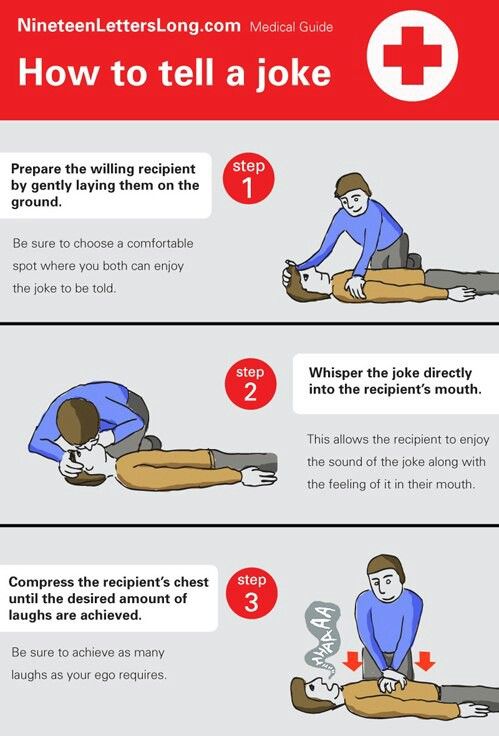
Nothing dies without a trace, to this day in the United States there are many fans of 3-wheeled ATVs. They set up a fan site (www.3wheelerworld.com). Three Better Than Four rallies are held (three is better than four). 3-wheelers have become a rarity, but are still in operation and sold at auctions. The price for some, well-preserved specimens, exceeds the price of new, modern models.
By 2017, the following manufacturers firmly established their positions in the Russian market: BRP, Stels, Polaris, Honda, Suzuki, Yamaha, Kawasaki, Arctic Cat, Baltmotors, Cectek, Hisun, Irbi, Kazuma, Lifan, Nissamaran, Polar Foks, Stormbringer, SYM , ZID, Russian Mechanics.
The main types of ATVs:
- Utility (widely used for agricultural needs, in demand among hunters and fishermen, great for leisurely family walks, in demand among travelers, used in the armed forces and civilian special units. There are single, double and with a 6x6 wheelbase with a cargo platform.
- Sports utility (this is a very narrow focus). ATVs of this type are needed for aggressive driving over rough terrain, gravel areas, and specially prepared tracks. This type is designed for you to overcome the off-road at full throttle, getting the maximum adrenaline. The leaders in this form are BRP Renegade and Polaris Scrambler.
- Sporty (designed for prepared trails, light, powerful, with long suspension travel). As a rule, these are rear-wheel drive models of ATVs with a chain drive, in rare cases, with a cardan. A striking example of a sports ATV are: Yamaha Raptor 700, Yamaha YFZ450, Honda TRX450, Honda TRX250R, Yamaha Banshee, Honda 400EX.
- Children's. At the moment, a huge range of children's ATVs from various companies is presented on the Russian market. All well-known brands offer children's ATVs with a cubic capacity of 50 cubic meters or more. Today, there are electric ATVs for very young users and versions with internal combustion engines for those who are older. The pricing policy is very different. Brand models often cost like adult ATV models of Russian or Chinese production. The choice mainly falls on Russian and Chinese manufacturers. the price of this ATV is not too high and you will be able to change the ATV for a more powerful one in a year or two. A good example is STELS with their reliable 50C and 100RS models.
The pricing policy is very different. Brand models often cost like adult ATV models of Russian or Chinese production. The choice mainly falls on Russian and Chinese manufacturers. the price of this ATV is not too high and you will be able to change the ATV for a more powerful one in a year or two. A good example is STELS with their reliable 50C and 100RS models.
Motors are two-stroke (running on a mixture of gasoline + oil) and four-stroke (running on gasoline).
As you may have noticed from the history of the creation of ATVs, the first models were equipped exclusively with two-stroke engines. They are easy to manufacture and the principle of their operation does not require any auxiliary systems. With a smaller cubic capacity, good power is achieved. Cons - not durable, require frequent repairs.
A more complex motor in production and operation - is a four-stroke .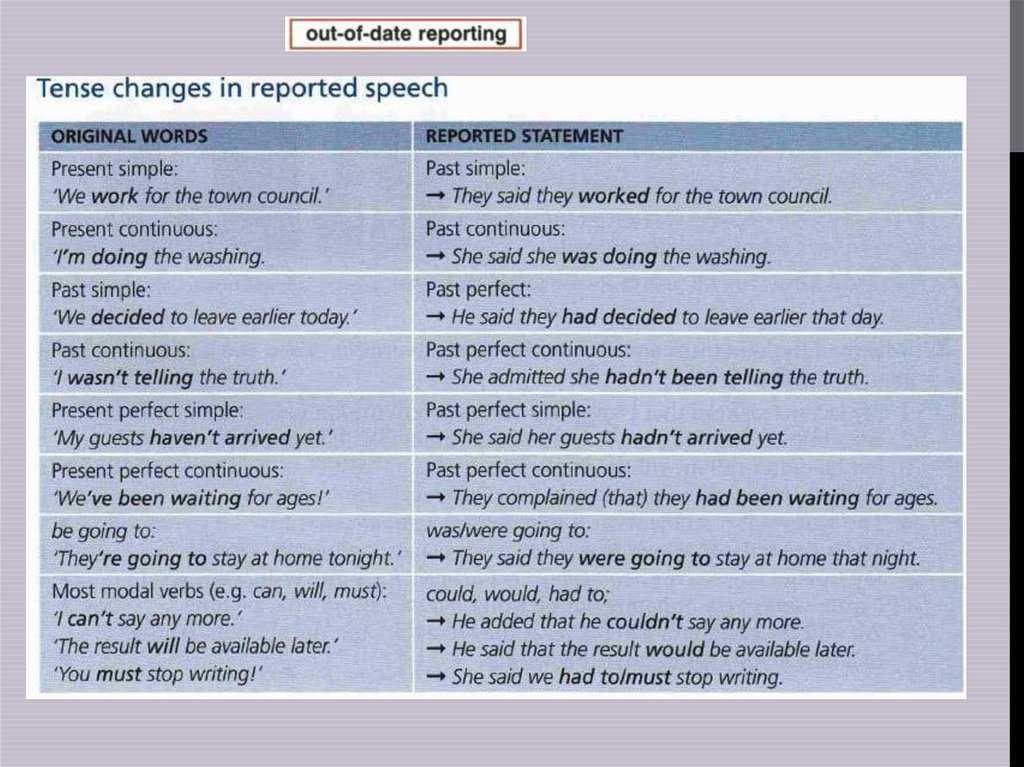 Currently, all known ATVs are equipped with such motors. They last longer, are much more economical than two-strokes, have a cleaner exhaust, and do not require mixing gasoline and oil. Cons: Difficult to manufacture.
Currently, all known ATVs are equipped with such motors. They last longer, are much more economical than two-strokes, have a cleaner exhaust, and do not require mixing gasoline and oil. Cons: Difficult to manufacture.
In modern ATVs, both two-cylinder engines (V-shaped, V-Twin) and single-cylinder (single-barrel) engines are used.
If you are faced with the question of which engine is better? The answer is simple. If you need a more powerful ATV, then it is better to choose an ATV with a V-twin engine. But keep in mind that the price tag for an ATV with such an engine will be higher than with a single-cylinder engine.
Each manufacturer determines for which model this or that motor is required. For example, the Canadian company BRP equips its entire line of ATVs for adults with Rotax V-engines, the Japanese company Yamaha uses only single-cylinder engines, and the Russian company STELS completes its ATVs with both single-cylinder engines and V-engines. For example, from 50 cubic meters. see up to 600 cu. see equipment is equipped with "single-barreled", more than 650 to 850 "double-barreled".
For example, from 50 cubic meters. see up to 600 cu. see equipment is equipped with "single-barreled", more than 650 to 850 "double-barreled".
The operation of a four-stroke engine is perfectly demonstrated in this video:
Two-stroke and four-stroke engines require cooling.
It is of two types:
- air (used on two-stroke and four-stroke engines with a small cubic capacity from 50 to 125 cubic meters)
- water (“dropsy” is a figurative name, of course, no one pours water anymore, antifreeze is used. Water cooling is required for more cubic engines from 150 cubic meters, especially two-cylinder engines, because they are “hotter” than single-cylinder ones).
The design of fuel systems is divided into two types:
- carburetor (easier to self-maintenance, requires frequent carburetor settings)
- injection (difficult to self-maintenance, does not require adjustments, more unpretentious, due to the supply of fuel under pressure, an increase in power is noticeable, it is used in most new models of ATVs.
The suspension of an ATV is one of the most important elements that is responsible for the maneuverability of vehicles in difficult off-road conditions and directly affects the control and handling of an ATV.
There are two types of suspensions: independent and dependent.
Let's consider them in more detail.
Independent or multi-link suspension designed for better flotation and comfort. For cross-country ability, it is important that when passing irregularities, the wheels do not lose contact with the surface, in other words, they do not hang out during critical suspension moves. Constant contact with the surface gives better off-road performance, because each of the wheels has a hook with the surface and the equipment does not get up. Also, an independent suspension has a much higher ground clearance than an ATV with a dependent suspension. In other words, your ATV will not sit on the "belly".
Dependent suspension or axle (axle) is used in sports quad bikes designed for quad-cross, inexpensive Chinese models with small cubic capacity and children's quad bikes. This type of suspension is more durable in operation and has a better transmission of torque from the box to the wheels. But it has a number of disadvantages:
This type of suspension is more durable in operation and has a better transmission of torque from the box to the wheels. But it has a number of disadvantages:
- not so comfortable suspension
- easily hung out on bumps, thereby losing contact of the wheel with the surface
- Not suitable for serious off-road use.
Despite its disadvantages, this type of suspension is used on sports ATVs. Ease of execution and reliability became the basis for choosing an ATV for serious multi-day marathon rallies such as Dakar.
There are several types of transmissions. The installation of one or another type on a certain model is determined by the pricing policy of the model.
Let's look at the main types of transmissions.
Transmission with automatic centrifugal clutch.
Used on low-power and budget models. From the STELS line - this is ATV 50C, 100RS, 300V.
This circuit is simple and inexpensive to manufacture, designed to work with low torque.
Gear shift modes:
L - low gear (for towing cargo or heavy off-road)
H - working gear (for movement, including on light off-road), gear shifting up / down is not required
N - neutral
R - reverse
P - parking
CVT type transmission.
It is used on powerful models of ATVs and UTVs. In the STELS line, these are ATV 600Y Leopard / 650 Leopard Efi, Guepard 650/800/850/1000. In the line of other brands, these are utility and sport-utility ATVs with a volume of 500 to 1,200 cubic meters. cm.
This scheme is difficult to manufacture, relatively more expensive than centrifugal clutch and is designed for motors with high torque.
Gear shift modes:
L - low gear (for towing cargo or heavy off-road)
H - working gear (for movement, including on light off-road), gear shifting up / down is not required
N - neutral
R - reverse
P - parking
Mechanical transmission (manual transmission) .
It is used on sports ATVs with high-powered engines that have a huge torque. As a rule, mechanical gearboxes (manual transmission) are installed in five or six speeds.
A prominent representative of this scheme is the Yamaha YFZ450R, YFM700 R, better known as the Raptor.
This scheme is classic, it differs from its competitors by a huge margin of safety.
This type of transmission is chosen exclusively for racing, where reliability, rigid connection of the engine with the wheels, instant reaction of the gas trigger to the wheels, or in other words, excellent dynamics are important. Also, the mechanics allows the pilot to select a certain mode of movement for a dynamic high-speed corridor.
Gear shift modes:
- 1,2,3,4,5,6 (forward gears)
- reverse (reverse)
Automatic transmission
The rarest type of transmission today.
Used on utility quad bikes, the gearbox is fully integrated into the engine body, it is one whole unit with one oil sump. This scheme is difficult to manufacture, but at the same time unpretentious and durable. It is installed on high-capacity engines with high torque. The disadvantage of this scheme is the maintenance of the automatic box, in the event of a malfunction in the engines or the box, the entire assembly must be opened, which is quite labor-intensive. A prominent representative of this scheme is the HONDA TRX700.
Cardan drive transmits the torque from the gearbox to the gearbox (front or rear), in turn, two drives come out of the gearbox and the moment is transmitted directly to the wheels. This torque transfer scheme is used on utility ATVs and sport utility. The circuit is reliable and durable. Of the minuses, one can single out the considerable weight and complexity of servicing numerous nodes (cardan crosses, gearbox, constant velocity joint (CV joint), CV joint anthers).
Chain drive, is made on the principle of a motorcycle drive, a leading star is installed on the gearbox, a driven star is installed on the axle, two stars are connected to each other by means of a chain. This scheme is used in small-capacity children's ATVs or in sports ATVs. It is lightweight, the moment from the engine to the wheels is transmitted through a smaller number of nodes, thereby losing less power and improving responsiveness to the gas trigger. Of the minuses, one can single out the fragility of this scheme, limited use in conditions of severe pollution, low ground clearance, periodic replacement of the leading stars and constant maintenance, and periodic replacement of the final drive chain.
All-wheel drive connection modes also apply to the transmission.
ATV transmission modes :
2WD - rear-wheel drive mode of operation of motor vehicles with a hard-locked differential or with an unlocked one with the possibility of blocking (depending on the manufacturer).
4WD - all-wheel drive mode with unlocked front differential
4WD Lock - all-wheel drive mode with a locked front differential.
These modes are used only in utility and sport utility models.
All ATVs are designed in such a way that the rear wheels (bridge) are the main driving pair.
Most brands use a locked rear axle in their models - this increases off-road patency, but on hard ground it puts an extra load on the transmission, accelerates tire wear and increases the degree of wheel slippage. But no matter how many disadvantages of this scheme, an ATV is, first of all, a motorcycle designed for serious off-road.
It is worth noting that some manufacturers such as Polaris decided to move away from the classic axle scheme and introduced a lockable differential into the rear axle. This scheme has proven itself well for owners of all-terrain vehicles in conditions of hard soils and asphalt.
Russian manufacturers of STELS equipment dispensed with this option, arguing that this unit tends to fail from time to time, and the repair of this unit is labor-intensive.
The electrical system of ATVs is designed in such a way as to withstand serious off-road conditions, work in conditions of 100% moisture and heavy pollution.
All ATV wiring is protected by a special "jacket" from chafing the wires on the frame elements and physical impact when overcoming off-road.
Connectors are also provided with proper protection, have a rubber seal and water-repellent grease.
Tire manufacturers produce models for use in certain conditions and for various purposes.
Let's look at what purposes tires are for:
- mud
- utilitarian
- cross
- highway
The mud tires are designed for heavy off-road use on soft ground. They have a high lug and are used in the maximum possible size from R27 to R36. Not recommended for use on hard ground and asphalt, tk. a high lug does not provide a proper contact patch on asphalt and transmits vibration to the steering, which in total leads to unsafe movement on asphalt.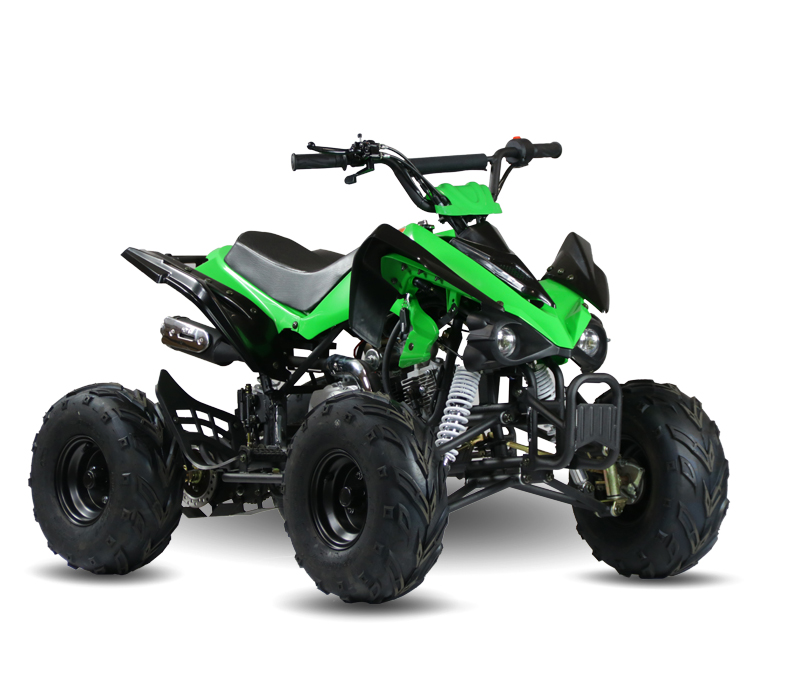
The utility tires are designed for use in soft and hard ground conditions. They have a medium grouser. This type of tire in most cases is installed on stock versions of utility ATVs. I would like to note that on Stels ATVs on the Guepard 650/800/850/1000 model, mud tires are installed from the factory.
The cross-country tires are designed for use on hard ground and prepared cross-country trails. They have a small grip. Used on sports ATVs or sports utility.
Road tires are designed for asphalt use only. They do not have a grouser. The tires have notches (tread) necessary to divert water from the contact patch with asphalt.
Just like rubber, many disc manufacturers produce their products for various purposes.
Let us consider in more detail what types of disks exist and for operation in what conditions they are intended:
Stamped discs - installed on budget versions of ATVs. As a rule, this is a model in the simplest (budget) configuration in the line of a particular brand. Stamped discs are designed mainly for measured ATV riding, without serious loads.
As a rule, this is a model in the simplest (budget) configuration in the line of a particular brand. Stamped discs are designed mainly for measured ATV riding, without serious loads.
Alloy wheels - installed on more expensive versions of the brand line or as a tuning kit to replace stamped ones. They have better performance, better appearance, designed for tougher operation.
Alloy wheels are with one (external) beadlock ( Beadlock) or with two beadlocks (Dual Bedlock), external and internal. The beadlock is a ring that, by means of bolts, attracts the bead of the tire to the disc. The essence of the beadlock is to prevent the tire from disassembling when operating in harsh conditions.
The assembly of a wheel with a beadlock is different from the usual one. The rubber bead does not go over the side of the disk for subsequent landing, but, on the contrary, is left outside the bead of the disk, and with the help of a beadlock ring, it is tightly attracted to the disk.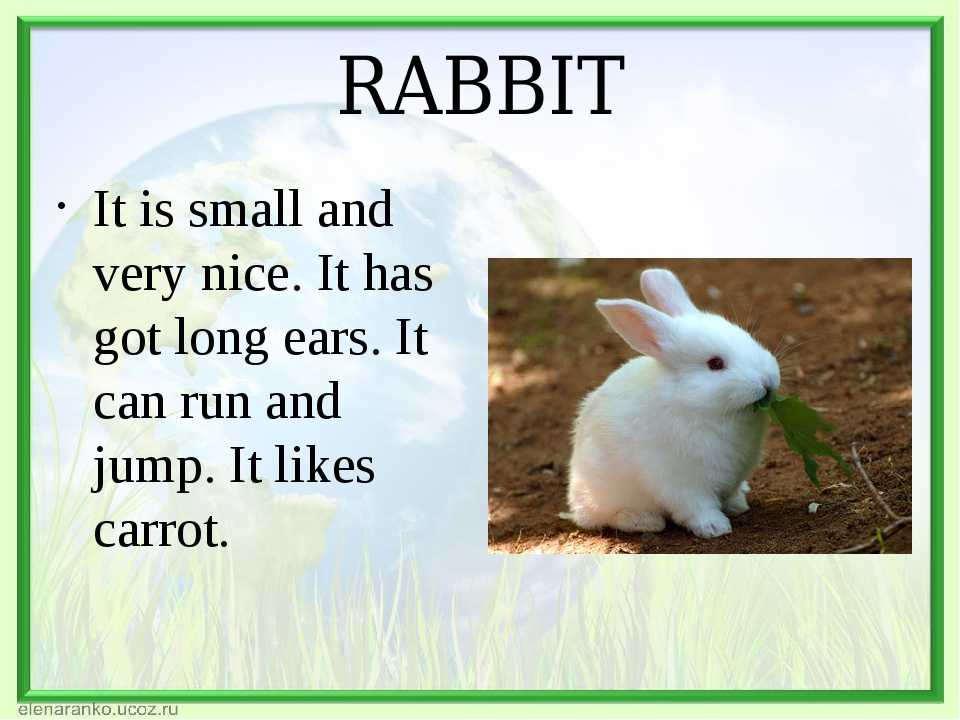 Thus, the rubber bead is clamped between the beadlock and the bead of the disc. Such an assembly scheme does not poison the air, it can work at low tire pressures and the moment of disassembly on the track is impossible.
Thus, the rubber bead is clamped between the beadlock and the bead of the disc. Such an assembly scheme does not poison the air, it can work at low tire pressures and the moment of disassembly on the track is impossible.
This type of disc is designed for serious off-road or is used for athletes participating in cross-country races or rally raids. This type of disk perfectly tolerates lateral loads and does not allow the rubber to be disassembled.
The history of the company began in 1996 with small wholesale sales of domestic bicycles. And in 2003, the first Velomotors plant for the production of bicycles was built in the Moscow region. The company, thanks to the impeccable quality of its products, quickly conquered the Russian market and won the sympathy of the domestic consumer. A competent marketing policy and continuous improvement of production cycles have become the basis for the rapid development and recognition of manufactured products by reputable specialists and ordinary customers.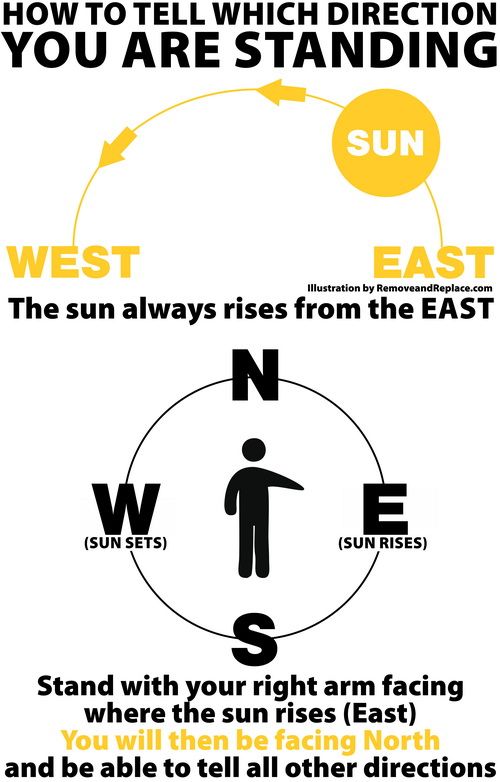
To individualize the manufactured products on the market, the concept of the successful STELS brand was developed, which today has gained quite wide popularity both in the Russian Federation and abroad. Bicycles and scooters "STELS" have become symbols of the revolutionary breakthrough of the domestic manufacturer in the sector of European quality. The use of automated and robotic lines in the production process made it possible to launch the production of a large volume of STELS bicycles and scooters. Velomotors is currently the largest bicycle manufacturer in Europe.
In 2009, the trade line offered for sale was replenished with modern ATVs manufactured under licenses from leading Asian manufacturers.
With the appearance of a line of utility ATVs in the product range, Velomotors holding has reached a fundamentally new level of production of ATV equipment for work and entertainment. Attractive price and reliability are two key points that allow the STELS brand to dominate the domestic market, offering models and developments that are fundamentally new for the Russian segment and successfully compete with Japanese and American counterparts.
The availability of any spare parts and accessories for STELS equipment is another strong argument for the Russian buyer offered by Velomotors. The availability and adequate price for any spare parts allowed the owners to feel for the first time the advantages of a civilized European service for the sale and maintenance of bicycles, ATVs and snowmobiles. Service support with a factory warranty for all manufactured models is the corporate style of Velomotors, which ensured dynamic promotion and a serious sales volume.
The idea of an affordable price for high-quality competitive equipment, successfully implemented by Velomotors, has formed a serious prospect for the progress of this industry, which, of course, will develop in the very near future.
The group of companies "VELOMOTORS" has certified its own production in accordance with the international standard ISO 9001:2011
The group of companies "VELOMOTORS" has certified its production plants according to the international system of quality standards ISO 9001:2011.